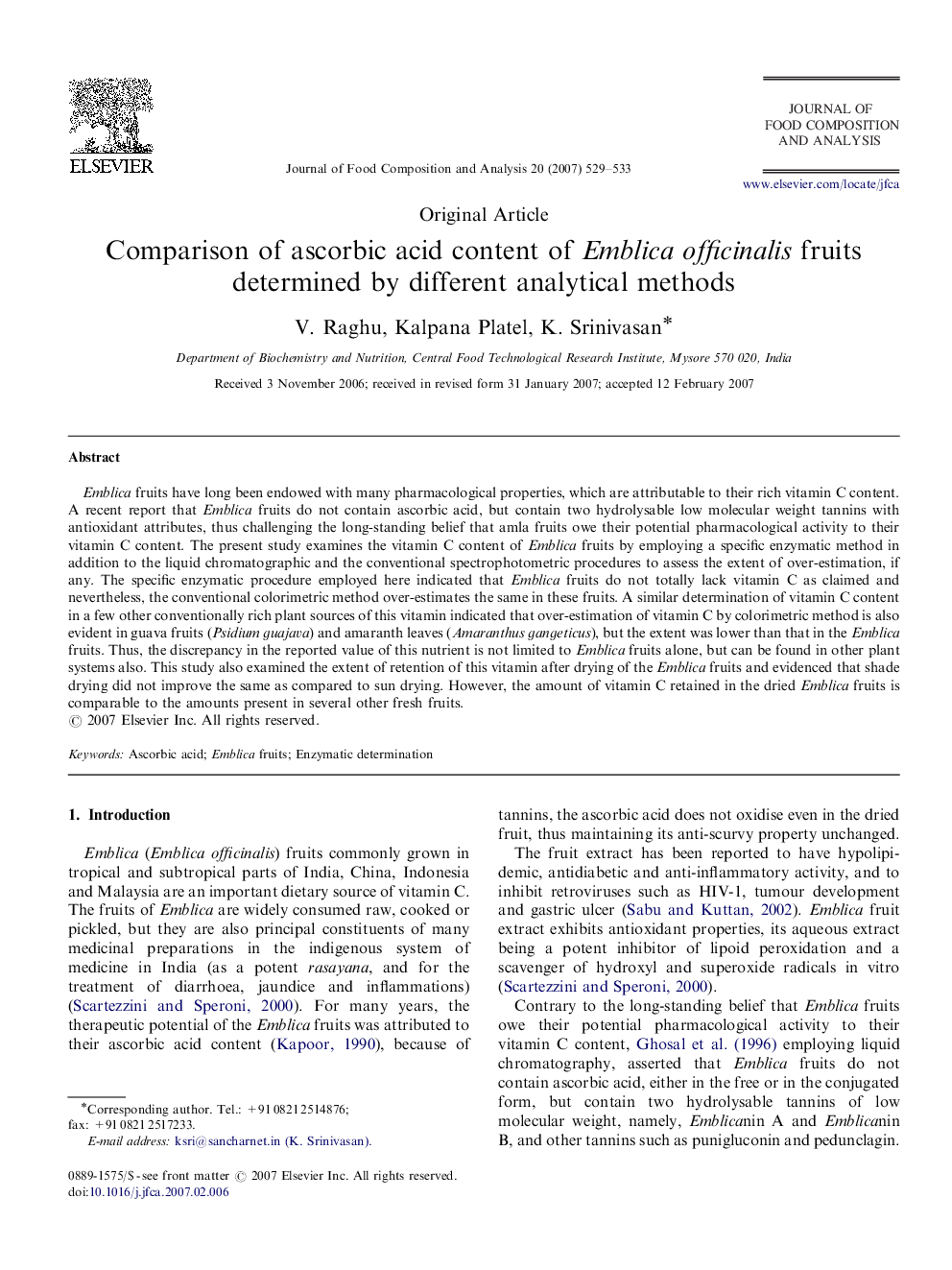| Article ID | Journal | Published Year | Pages | File Type |
|---|---|---|---|---|
| 1219312 | Journal of Food Composition and Analysis | 2007 | 5 Pages |
Emblica fruits have long been endowed with many pharmacological properties, which are attributable to their rich vitamin C content. A recent report that Emblica fruits do not contain ascorbic acid, but contain two hydrolysable low molecular weight tannins with antioxidant attributes, thus challenging the long-standing belief that amla fruits owe their potential pharmacological activity to their vitamin C content. The present study examines the vitamin C content of Emblica fruits by employing a specific enzymatic method in addition to the liquid chromatographic and the conventional spectrophotometric procedures to assess the extent of over-estimation, if any. The specific enzymatic procedure employed here indicated that Emblica fruits do not totally lack vitamin C as claimed and nevertheless, the conventional colorimetric method over-estimates the same in these fruits. A similar determination of vitamin C content in a few other conventionally rich plant sources of this vitamin indicated that over-estimation of vitamin C by colorimetric method is also evident in guava fruits (Psidium guajava) and amaranth leaves (Amaranthus gangeticus), but the extent was lower than that in the Emblica fruits. Thus, the discrepancy in the reported value of this nutrient is not limited to Emblica fruits alone, but can be found in other plant systems also. This study also examined the extent of retention of this vitamin after drying of the Emblica fruits and evidenced that shade drying did not improve the same as compared to sun drying. However, the amount of vitamin C retained in the dried Emblica fruits is comparable to the amounts present in several other fresh fruits.
